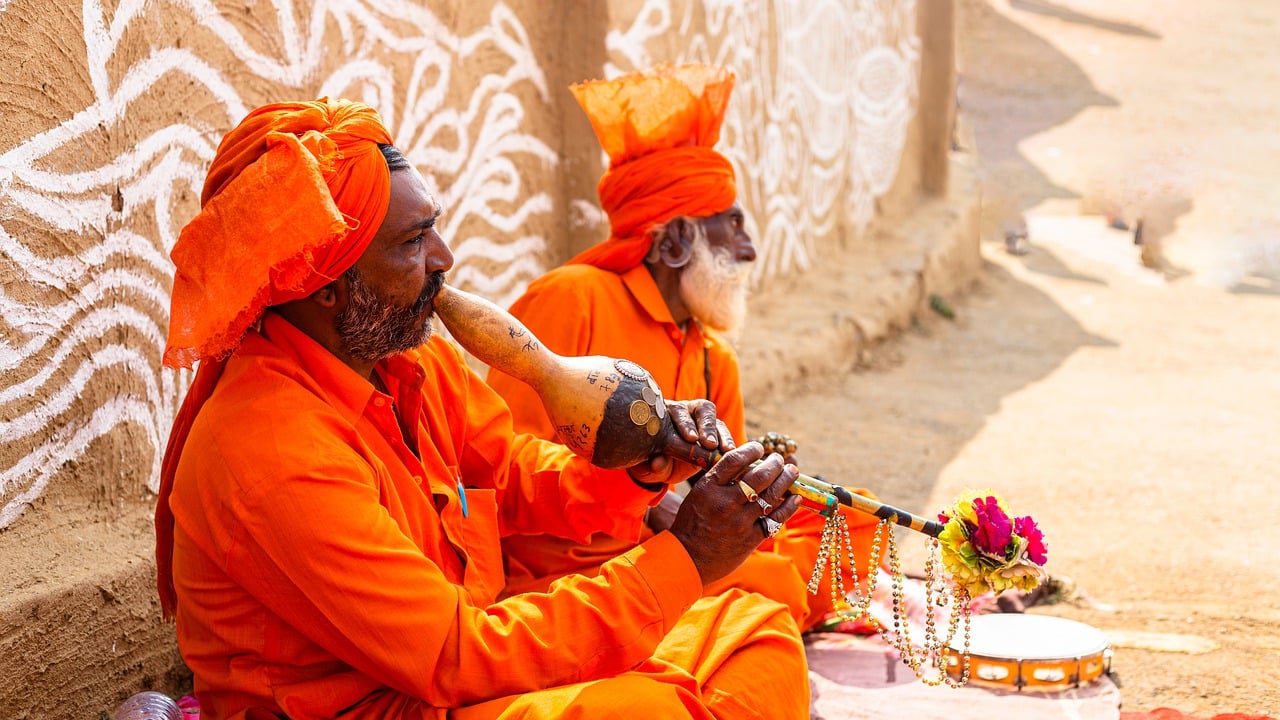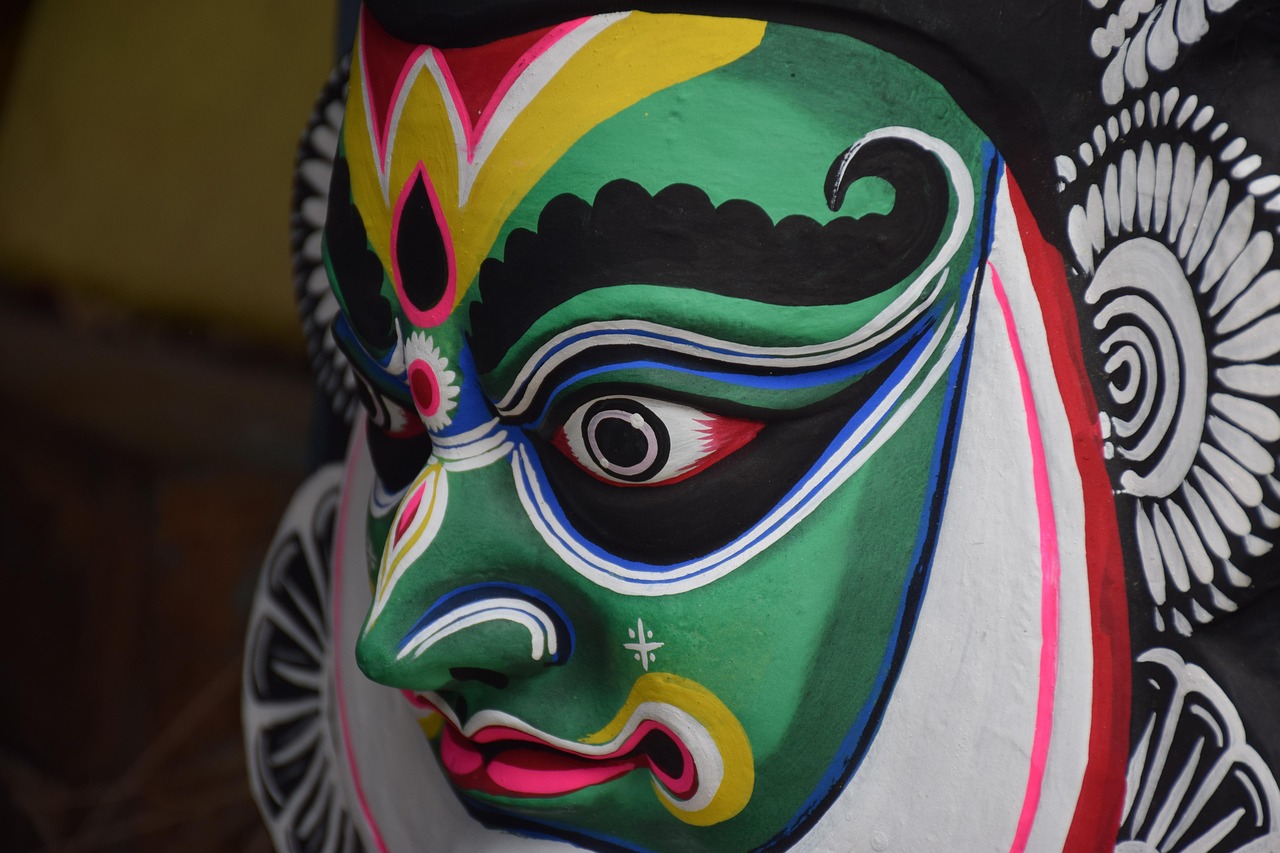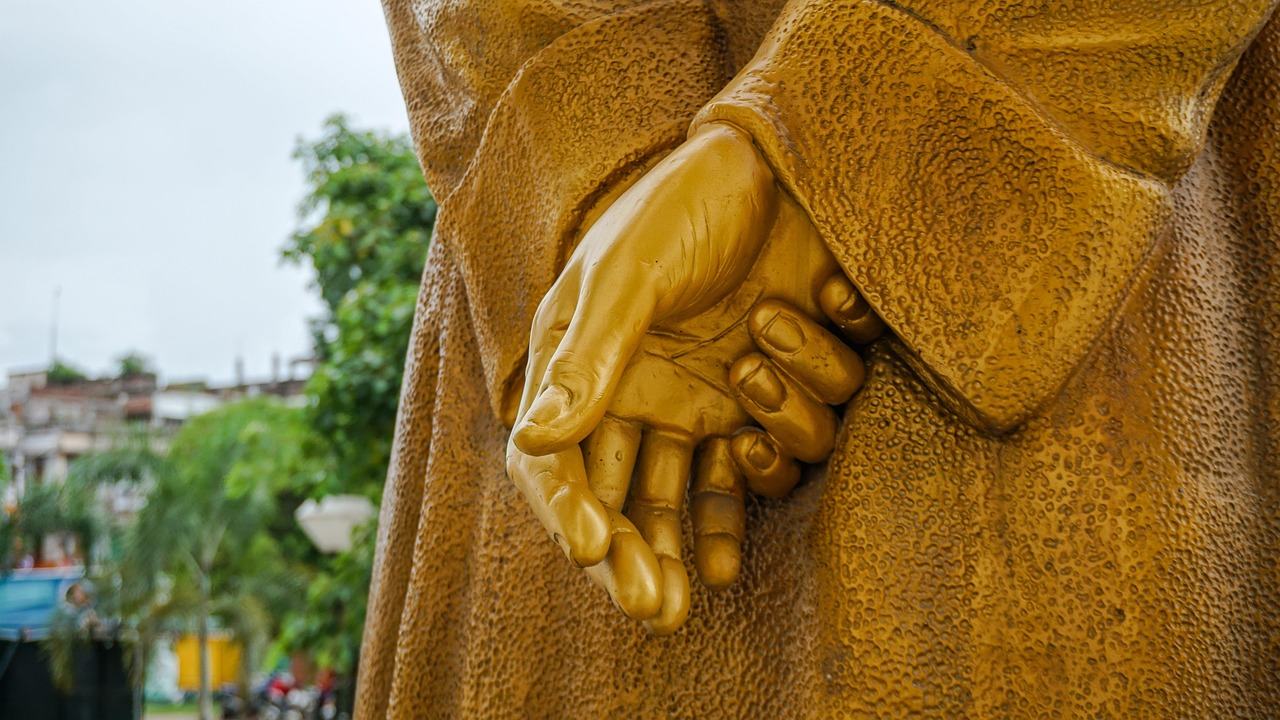This article delves into the rich tapestry of Bengali poetry, exploring its historical roots, influential figures, and profound impact on Indian literature and culture.
Origins of Bengali Poetry
Bengali poetry traces its origins to the 12th century, deeply influenced by the region’s socio-political landscape and cultural exchanges that shaped its unique identity. The early forms of poetry were often tied to religious and folk traditions, reflecting the lives and struggles of the common people.
Key Historical Figures in Bengali Poetry
- Rabindranath Tagore: A literary genius who became the first non-European Nobel laureate in Literature. His works infused Bengali poetry with themes of nature, spirituality, and humanism.
- Kazi Nazrul Islam: Known as the ‘Rebel Poet’, he challenged social norms and advocated for social justice through his powerful verses.
Rabindranath Tagore: A Literary Genius
Tagore’s contributions to Bengali poetry are monumental. His innovative use of language and form inspired countless poets, encouraging a modern approach that resonated with the evolving cultural context of Bengal and beyond. His poems often reflect a deep connection with nature and the human spirit.
Tagore’s Influence on Modern Poetry
His works not only enriched Bengali literature but also had a significant impact on modern poetry worldwide. Tagore’s ability to blend traditional forms with contemporary themes has left a lasting legacy that continues to inspire.
Kazi Nazrul Islam: The Rebel Poet
Nazrul’s poetry is characterized by its passionate call for social change and justice. He used his platform to voice the struggles of the oppressed, making him a pivotal figure in Bengali literature.
Themes and Motifs in Bengali Poetry
- Nature: A central motif, often depicted through vivid imagery and emotional depth.
- Spirituality and Mysticism: Many poets explore these themes, drawing from various philosophical traditions.
The Global Influence of Bengali Poetry
Bengali poetry has transcended regional boundaries, influencing global literary movements. The translation of these works into various languages has facilitated their global reach, allowing diverse audiences to appreciate their beauty.
Impact on Indian Literature
The influence of Bengali poetry can be seen in the broader context of Indian literature, shaping narrative styles and thematic explorations across various languages and genres.
Conclusion: The Enduring Legacy of Bengali Poetry
Bengali poetry continues to thrive, influencing new generations of poets and writers. It remains a vital part of India’s cultural heritage, enriching the literary landscape with its profound insights and emotional resonance.

Origins of Bengali Poetry
Bengali poetry has a rich and vibrant history that dates back to the 12th century. This period marked the beginning of a profound literary journey, deeply intertwined with the socio-political landscape of Bengal. The region, known for its diverse cultural exchanges, played a pivotal role in shaping the unique identity of Bengali poetry.
During the early phases, Bengali poetry was influenced by religious texts and folk traditions, which laid the groundwork for a distinct poetic form. The Vaishnavism movement, which emphasized devotion to Lord Krishna, inspired many poets to explore themes of love, spirituality, and the divine. This spiritual awakening provided a fertile ground for poets to express their innermost feelings and connect with a broader audience.
As the centuries progressed, the socio-political climate continued to evolve, further influencing the themes and styles of Bengali poetry. The impact of colonialism in the 18th and 19th centuries brought about a wave of change, prompting poets to address issues of identity, nationalism, and resistance. This era saw the emergence of prominent figures who would leave an indelible mark on the literary landscape.
One of the most significant developments was the introduction of modernism in the 20th century, led by the likes of Rabindranath Tagore and Kazi Nazrul Islam. Their innovative approaches not only enriched Bengali poetry but also resonated with the global literary community, showcasing the universal themes of love, struggle, and humanism.
Today, Bengali poetry continues to thrive, reflecting the complexities of contemporary life while honoring its rich heritage. The ongoing evolution of this art form is a testament to its resilience and enduring relevance in the cultural tapestry of India.

Key Historical Figures in Bengali Poetry
Bengali poetry has been profoundly shaped by the contributions of several notable poets, among whom Rabindranath Tagore and Kazi Nazrul Islam stand out for their unique voices and perspectives. Their literary legacies have not only enriched the Bengali literary landscape but have also had a significant impact on Indian culture as a whole.
Rabindranath Tagore: A Literary Luminary
Rabindranath Tagore, the first non-European to win the Nobel Prize in Literature in 1913, is often regarded as a literary genius. His poetry encapsulates a vast array of themes, including nature, spirituality, and humanism. Tagore’s works, such as Gitanjali, explore the relationship between the individual and the universe, emphasizing a deep spiritual connection with nature.
Tagore’s innovative approach to language and form has inspired countless poets, encouraging them to embrace modernity while respecting traditional roots. His poetry reflects the socio-political climate of his time, making him a pivotal figure not only in literature but also in India’s struggle for independence. Through his evocative verses, Tagore fostered a sense of national identity and cultural pride.
Kazi Nazrul Islam: The Rebel Poet
Kazi Nazrul Islam, often referred to as the “Rebel Poet,” is celebrated for his passionate advocacy for social justice and equality. His poetry challenges oppressive societal norms and champions the rights of the marginalized. Nazrul’s works, rich with revolutionary fervor, echo the struggles of the common people, making him an enduring symbol of resistance and hope.
His unique style blends traditional forms with modern themes, creating a powerful voice that resonates with readers. Nazrul’s poetry not only addresses issues of love and longing but also delves into the complexities of human existence, making his contributions invaluable to Bengali literature.
Conclusion
The contributions of Rabindranath Tagore and Kazi Nazrul Islam have left an indelible mark on Bengali poetry. Their distinct voices and perspectives continue to inspire new generations of poets and writers, ensuring that the rich legacy of Bengali literature remains vibrant and influential in the cultural tapestry of India.
Rabindranath Tagore: A Literary Genius
Rabindranath Tagore stands as a monumental figure in the realm of Bengali literature, renowned for his profound contributions that have shaped not only Bengali poetry but also the global literary landscape. As the first non-European laureate of the Nobel Prize in Literature, Tagore’s works resonate with themes of nature, spirituality, and humanism, creating a rich tapestry that reflects the complexities of human experience.
Born in 1861, Tagore’s literary journey began at an early age, influenced by his family’s artistic background. His poetry often encapsulates the essence of the Bengali landscape, weaving vivid imagery of the natural world into his verses. This connection to nature not only highlights its beauty but also serves as a metaphor for the transient nature of life itself.
Tagore’s exploration of spirituality is another hallmark of his work. Drawing from various philosophical traditions, he delves into the depths of the human soul, seeking to understand the divine and the interconnectedness of all beings. His poems often evoke a sense of mysticism, inviting readers to reflect on their own spiritual journeys.
Moreover, Tagore’s influence extends beyond literature; he played a pivotal role in the cultural renaissance of India. His verses inspired movements for social justice and national identity, encouraging a sense of pride among Indians during the struggle for independence. His songs, such as “Jana Gana Mana,” have become anthems of national unity.
In the realm of modern poetry, Tagore’s innovative use of language and form has inspired countless poets, urging them to embrace new styles and themes. His legacy continues to thrive, influencing contemporary writers and enriching the literary landscape with his profound insights.
In conclusion, Rabindranath Tagore’s contributions to Bengali poetry are immeasurable. His ability to intertwine nature, spirituality, and humanism within his works has left an indelible mark on both Bengali and global literature. As new generations of poets emerge, Tagore’s spirit lives on, reminding us of the enduring power of poetry to inspire and transform.
Tagore’s Influence on Modern Poetry
Rabindranath Tagore, a luminary in the world of literature, revolutionized Bengali poetry with his innovative use of language and form. His works transcended traditional boundaries, inspiring a wave of poets to adopt a more modern approach that resonated deeply with the evolving cultural context of Bengal and beyond. Tagore’s ability to blend profound philosophical insights with accessible language made his poetry relatable and impactful.
One of the key elements of Tagore’s influence is his exploration of universal themes. He addressed the complexities of human emotions, nature, and spirituality, which allowed his poetry to connect with a diverse audience. This universality encouraged poets to break away from rigid forms and to experiment with their own voices, leading to a more dynamic and inclusive literary scene.
Furthermore, Tagore’s emphasis on individual expression and cultural identity encouraged poets to draw from their personal experiences and regional heritage. This shift not only enriched Bengali poetry but also contributed to a broader dialogue within Indian literature, inspiring writers across different languages to embrace their cultural narratives.
Tagore’s legacy is evident in the works of subsequent generations of poets who have continued to explore the themes he championed. His influence can be seen in the way modern poets incorporate imagery, emotion, and social commentary into their verses, reflecting the ongoing cultural and political changes in society.
In conclusion, Tagore’s innovative approach to poetry has left an indelible mark on the literary world. His ability to inspire a modern poetic sensibility has not only shaped Bengali literature but has also played a crucial role in the evolution of poetry in India as a whole. As we reflect on his contributions, it is clear that Tagore’s influence will continue to resonate for generations to come.
Tagore’s Role in Indian Independence
Rabindranath Tagore, a luminary in Bengali literature, played a pivotal role in shaping the cultural landscape of India during the tumultuous period leading up to independence. His literary contributions transcended mere artistic expression; they became a rallying cry for national pride and identity.
Through his evocative verses and soul-stirring songs, Tagore articulated the aspirations and struggles of the Indian people. His poetry resonated deeply with the masses, instilling a sense of unity and purpose among those yearning for freedom from colonial rule. Tagore’s works often celebrated the rich tapestry of Indian culture, emphasizing the importance of national identity in the face of oppression.
| Key Works | Impact on Independence Movement |
|---|---|
| Gitanjali | Inspired feelings of hope and resilience among freedom fighters. |
| Amar Sonar Bangla | Served as an anthem for the struggle against British rule. |
| Chitto Jetha Bhayshunyo | Encouraged a vision of a free and equitable society. |
Tagore’s influence extended beyond literature; he was a visionary who understood the power of culture in shaping societal values. His emphasis on education, self-reliance, and the arts fostered a renewed sense of pride among Indians, motivating them to reclaim their heritage and assert their right to self-determination.
Moreover, Tagore’s interactions with key figures of the independence movement, such as Mahatma Gandhi, further solidified his role as a cultural ambassador for freedom. His songs became anthems for protests, echoing the sentiments of millions who longed for liberation.
In conclusion, Tagore’s literary genius and profound insights into the human spirit not only enriched Bengali poetry but also ignited a flame of national consciousness that contributed significantly to India’s struggle for independence. His legacy continues to inspire generations, reminding us of the enduring power of art in the pursuit of justice and freedom.
Kazi Nazrul Islam: The Rebel Poet
Kazi Nazrul Islam, often referred to as the ‘Rebel Poet’, holds a significant place in the realm of Bengali literature. His poetry is not just a reflection of artistic expression but a powerful medium for social change. Born in 1899, Nazrul’s life and works were profoundly influenced by the tumultuous socio-political landscape of his time, which shaped his unwavering commitment to social justice and equality.
His poetry often challenged the established norms of society, advocating for the rights of the oppressed and marginalized. Nazrul’s unique voice resonated with the struggles of the common people, making him a beloved figure among those seeking freedom and justice. His works addressed issues such as class disparity, gender inequality, and religious intolerance, positioning him as a revolutionary figure in Bengali literature.
One of the most notable aspects of Nazrul’s poetry is his use of powerful imagery and emotion. He employed a rich tapestry of metaphors and symbols to convey his messages, often drawing upon themes of love, rebellion, and human dignity. His verses not only inspire but also provoke thought, encouraging readers to reflect on the societal issues that persist today.
Moreover, Nazrul’s contributions extend beyond poetry; he was also a gifted musician and playwright. His songs, infused with the same revolutionary spirit as his poetry, played a vital role in the cultural movement of Bengal. They became anthems for the independence movement, further solidifying his status as a national icon.
In conclusion, Kazi Nazrul Islam’s legacy as the ‘Rebel Poet’ endures, inspiring new generations to challenge the status quo and strive for a more just society. His work remains a testament to the power of literature as a catalyst for social change.

Themes and Motifs in Bengali Poetry
Bengali poetry is a vibrant reflection of the human experience, weaving together a tapestry of emotions, thoughts, and cultural narratives. Its rich themes encompass love, nature, spirituality, and social issues, offering profound insights into the complexities of life and identity.
- Love: The theme of love is omnipresent in Bengali poetry, often depicted in its various forms—from romantic love to familial bonds. Poets like Rabindranath Tagore have eloquently expressed the nuances of love, portraying it as a transformative force that connects individuals and transcends time.
- Nature: Nature serves as a powerful motif, symbolizing beauty and the cycle of life. Poets frequently draw inspiration from the lush landscapes of Bengal, using vivid imagery to evoke emotions and highlight the interconnectedness of all living beings.
- Spirituality: Many Bengali poets delve into spiritual themes, exploring the relationship between the divine and the human soul. This exploration often incorporates elements of mysticism, inviting readers to reflect on their own spiritual journeys.
- Social Issues: Bengali poetry has long been a platform for social commentary, addressing issues such as inequality, oppression, and cultural identity. Poets like Kazi Nazrul Islam have used their works to challenge societal norms and advocate for justice, making their poetry not just art, but a call to action.
In conclusion, the themes and motifs found in Bengali poetry are not only diverse but also deeply intertwined with the region’s cultural identity. They reflect the struggles and triumphs of its people, making Bengali poetry a vital component of India’s literary heritage. As new generations of poets emerge, these themes continue to evolve, ensuring that the essence of Bengali poetry remains relevant and resonant.
Nature in Bengali Poetry
Nature plays a pivotal role in Bengali poetry, serving as a profound motif that encapsulates the essence of beauty, transience, and the intricate interconnectedness of life. Poets have long been captivated by the natural world, using it as a canvas to express their emotions and thoughts. The vivid imagery associated with nature not only enhances the aesthetic appeal of their works but also deepens the emotional resonance, allowing readers to connect with the themes on a personal level.
In Bengali poetry, nature is often depicted through a variety of elements, including flora, fauna, and the changing seasons. This representation serves multiple purposes:
- Symbol of Beauty: The serene landscapes, blooming flowers, and gentle rivers are often used to symbolize the beauty of life.
- Transience: The changing seasons reflect the transient nature of existence, reminding readers of the fleeting moments that define human experience.
- Interconnectedness: Nature illustrates the interconnectedness of all living beings, emphasizing that humans are but a part of a larger ecosystem.
Prominent poets like Rabindranath Tagore and Kazi Nazrul Islam have masterfully woven nature into their verses, exploring its complexities and celebrating its beauty. Tagore, for instance, often used the imagery of nature to convey deep philosophical insights and emotional depth. His poems resonate with the sounds of chirping birds, rustling leaves, and flowing rivers, creating a harmonious blend of emotion and imagery.
Moreover, the spiritual connection that many Bengali poets feel with nature adds another layer of meaning to their works. This connection often leads to reflections on life, death, and the universe, inviting readers to ponder their own existence within the grand tapestry of life.
In conclusion, nature in Bengali poetry is not merely a backdrop but a vital force that shapes the narrative and emotional landscape of the verses. It serves as a reminder of the beauty and fragility of life, urging readers to appreciate the world around them and their place within it.
Spirituality and Mysticism
have long been integral themes in Bengali poetry, serving as a profound exploration of the human experience and the quest for meaning. Many Bengali poets delve into these realms, drawing inspiration from a rich tapestry of philosophical traditions, including Hinduism, Buddhism, and Sufism. This interplay of ideas not only enriches their poetic expressions but also invites readers to reflect on their own spiritual journeys.
The exploration of spirituality in Bengali poetry often manifests through vivid imagery and emotive language. Poets like Rabindranath Tagore and Kazi Nazrul Islam weave intricate narratives that reflect the complexities of the soul’s longing for the divine. Tagore, for instance, frequently employed nature as a metaphor for spiritual awakening, illustrating how the beauty of the natural world can lead one closer to the divine essence.
Mysticism in Bengali poetry, on the other hand, often emphasizes the transcendental experiences that connect the individual with the universe. Poets explore themes of unity and oneness, suggesting that the divine is not separate from the human experience but rather intertwined within it. This perspective encourages readers to seek deeper connections with themselves and the world around them.
Moreover, the influence of philosophical traditions adds a unique layer of depth to these works. For example, Sufi mysticism, with its emphasis on love and devotion, resonates deeply within the verses of poets like Nazrul, who championed the idea of breaking societal barriers to achieve spiritual freedom. Such themes challenge readers to consider their place in the universe and the nature of their spiritual beliefs.
In conclusion, the exploration of spirituality and mysticism in Bengali poetry not only reflects the poets’ personal journeys but also invites readers to embark on their own quests for meaning. This rich tradition continues to inspire and resonate, making Bengali poetry a vital part of the cultural and spiritual landscape.

The Global Influence of Bengali Poetry
Bengali poetry has long been a beacon of artistic expression, transcending regional boundaries and influencing literary movements around the world. Its unique style and thematic richness have inspired poets globally, making it a significant cultural phenomenon.
Originating in the 12th century, Bengali poetry reflects the region’s complex socio-political landscape and rich cultural heritage. The evolution of this poetic form has been marked by the contributions of many renowned poets, each adding layers of meaning and depth to the literary fabric.
The roots of Bengali poetry can be traced back to the medieval period, where it was shaped by the cultural exchanges between different communities. Over the centuries, it has adapted to changing social norms and political climates, allowing it to resonate with diverse audiences.
- Rabindranath Tagore: The first non-European Nobel laureate in Literature, Tagore’s works are characterized by themes of love, nature, and spirituality.
- Kazi Nazrul Islam: Known as the ‘Rebel Poet’, Nazrul’s writings challenged societal norms and advocated for social justice.
Bengali poetry encompasses a wide range of themes, including:
- Nature: Often depicted through vivid imagery, nature symbolizes beauty and the transient nature of life.
- Spirituality: Many poets delve into mystical experiences, drawing from various philosophical traditions.
- Social Issues: Poets have historically used their verses to address pressing social concerns, making their work relevant across generations.
The translation of Bengali poetry into multiple languages has played a crucial role in its global acceptance. This accessibility allows international audiences to appreciate the depth and beauty of Bengali literary traditions.
Furthermore, the influence of Bengali poetry extends beyond its borders, shaping literary movements in various cultures and inspiring poets worldwide. Its rich themes and innovative styles continue to resonate, proving that the essence of Bengali poetry is truly universal.
In conclusion, the enduring legacy of Bengali poetry is a testament to its profound impact on the global literary landscape. As it continues to inspire new generations of poets, its cultural significance remains a vital part of the world’s artistic heritage.
Translation and Adaptation
The translation of Bengali poetry into various languages has played a crucial role in expanding its global presence, allowing a wider audience to appreciate its lyrical beauty and emotional depth. This process not only bridges cultural gaps but also enriches the literary landscape of the languages into which these poems are translated.
One of the most significant aspects of translating Bengali poetry is the challenge of preserving the original rhythm, imagery, and nuances of the language. Poets like Rabindranath Tagore and Kazi Nazrul Islam have had their works translated into numerous languages, enabling their powerful messages to resonate with readers from different backgrounds. For instance, Tagore’s profound reflections on nature and spirituality have inspired translations that capture the essence of his work, while also adapting it to fit the cultural context of the target language.
Moreover, the translation process often invites a collaborative effort between translators and poets, fostering a deeper understanding of the original text. This synergy allows translators to convey not just the literal meaning, but also the emotional undertones and cultural significance embedded in the poetry. As a result, translated works can evoke similar feelings in readers from diverse backgrounds, thereby creating a shared literary experience.
The impact of these translations extends beyond mere appreciation. They have sparked interest in Bengali literature and culture, leading to a greater demand for original works. This phenomenon has encouraged new generations of poets to explore themes that resonate on a global scale, further enhancing the rich tapestry of Bengali poetry.
In conclusion, the translation and adaptation of Bengali poetry are vital for its global reach. By allowing diverse audiences to engage with its profound themes and artistic expressions, these translations not only celebrate the beauty of Bengali literature but also foster a greater understanding of cultural diversity.
Impact on Indian Literature
Bengali poetry has played a crucial role in shaping the landscape of Indian literature, influencing a myriad of narrative styles and thematic explorations across various languages and genres. This influence can be traced back to the rich cultural heritage and historical context from which Bengali poetry emerged, particularly during the 19th and 20th centuries.
One of the most significant aspects of Bengali poetry’s influence is its ability to transcend regional boundaries. The works of iconic poets like Rabindranath Tagore and Kazi Nazrul Islam have not only enriched Bengali literature but also resonated with writers and poets from other linguistic backgrounds. Their themes of love, freedom, and social justice have inspired countless authors to explore similar motifs in their own works.
Furthermore, the unique narrative styles found in Bengali poetry, such as the use of vivid imagery and emotional depth, have encouraged writers in other Indian languages to adopt innovative techniques. For example, Tagore’s lyrical expressions and Nazrul’s rebellious tone have both influenced the development of modern poetry across India, encouraging poets to break traditional molds and experiment with form and content.
In addition, the translation of Bengali poetry into languages like Hindi, Marathi, and English has facilitated a broader appreciation of its themes and styles. This cross-pollination of ideas has led to a rich tapestry of literary expression that reflects the diverse cultural fabric of India.
Ultimately, the impact of Bengali poetry on Indian literature is profound and enduring. It has not only shaped the way stories are told but has also contributed significantly to the exploration of complex social and emotional issues, making it an integral part of the literary heritage of India.

Conclusion: The Enduring Legacy of Bengali Poetry
Bengali poetry has an enduring legacy that continues to influence new generations of poets and writers. Its rich tradition, rooted in the cultural and historical context of Bengal, has produced a wealth of literary treasures that resonate with readers across the globe. The emotional depth and profound insights found in Bengali poetry are not merely relics of the past; they actively shape contemporary literary expressions and cultural dialogues.
In the modern era, poets draw inspiration from the works of greats like Rabindranath Tagore and Kazi Nazrul Islam, whose themes of love, nature, and social justice remain relevant. These figures laid the groundwork for future poets, encouraging them to explore new forms and subjects, thereby enriching the literary landscape. The unique voice of Bengali poetry continues to echo in the works of emerging writers, who blend traditional motifs with modern sensibilities.
The cultural significance of Bengali poetry extends beyond literature. It plays a crucial role in shaping the identity of the Bengali people, fostering a sense of pride and unity. Through festivals, recitations, and educational curricula, the legacy of Bengali poetry is celebrated, ensuring its survival and relevance in contemporary society.
Moreover, the global reach of Bengali poetry has been enhanced through translations, allowing international audiences to appreciate its beauty and depth. This cross-cultural exchange not only broadens the appeal of Bengali poetry but also enriches the global literary community.
In conclusion, the enduring legacy of Bengali poetry is evident in its ability to inspire, connect, and resonate across generations. As it continues to thrive, it remains a vital part of India’s cultural heritage, offering profound insights and emotional resonance that enrich the literary landscape.
Frequently Asked Questions
- What is the significance of Bengali poetry in Indian literature?
Bengali poetry holds a special place in Indian literature, as it reflects the rich cultural heritage and diverse themes that resonate with the human experience. Its unique style and emotive depth have influenced many other literary forms across India.
- Who are the most notable poets in Bengali poetry?
Some of the most celebrated poets include Rabindranath Tagore, the first non-European Nobel laureate in Literature, and Kazi Nazrul Islam, known as the ‘Rebel Poet.’ Their contributions have shaped the landscape of Bengali poetry and left a lasting impact on literature.
- What themes are commonly found in Bengali poetry?
Bengali poetry explores a variety of themes such as love, nature, spirituality, and social issues. These motifs reflect the complexities of life and often serve to connect readers with deeper philosophical insights.
- How has Bengali poetry influenced global literature?
Bengali poetry has transcended regional boundaries, inspiring poets worldwide. The translation of its works into various languages has allowed diverse audiences to appreciate its beauty, enriching the global literary scene.
- What role did Tagore play in the Indian independence movement?
Rabindranath Tagore’s poetry and songs inspired a sense of national identity and cultural pride during the Indian independence movement, making him a significant figure in both literature and the fight for freedom.



























































